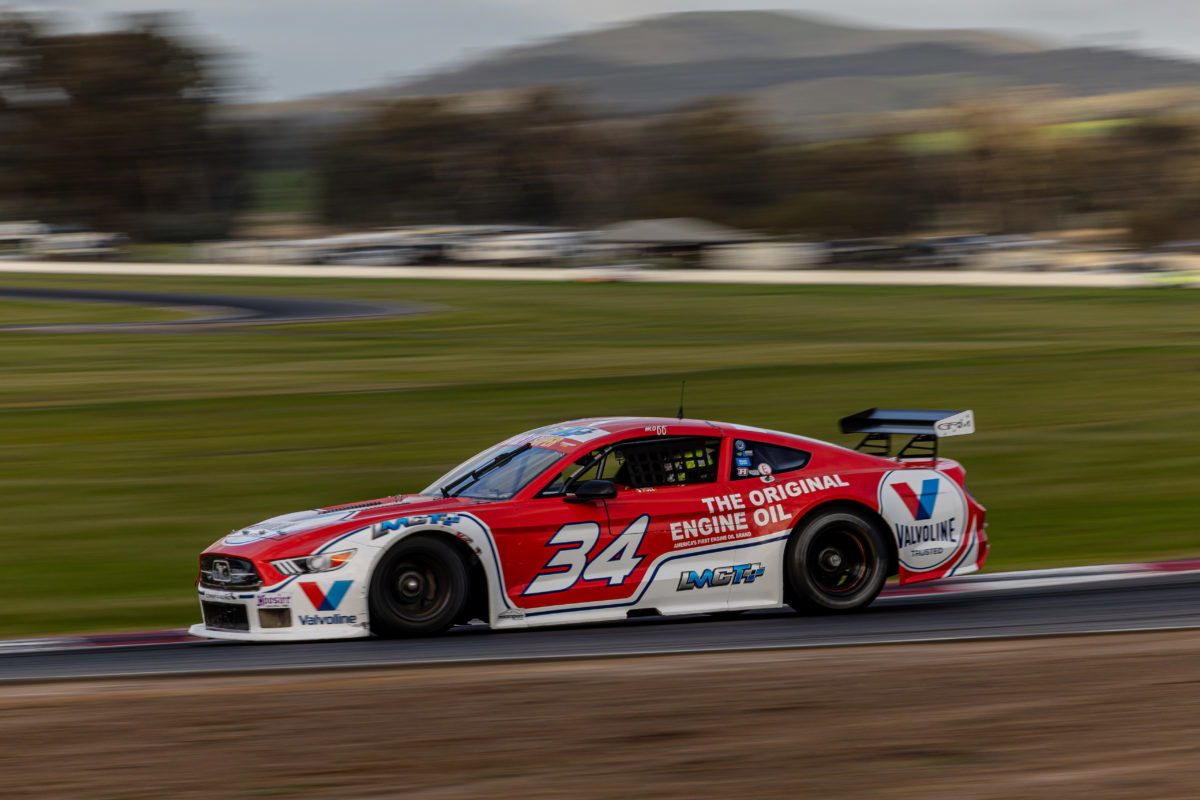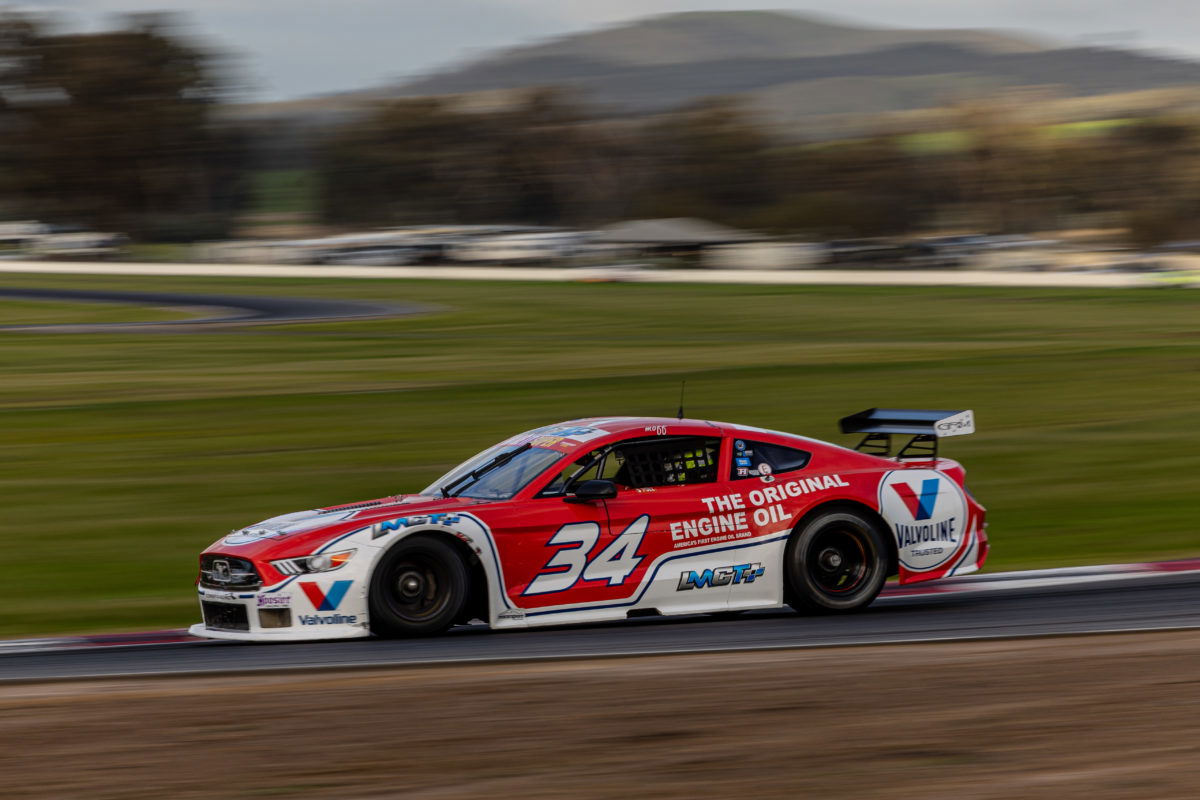

A Trans Am technical bulletin has raised questions over Garry Rogers Motorsport developments which could produce a perceived performance advantage.
Category management last week issued ‘Technical Bulletin #17’ advising that a ‘throttle pedal support plate’ of part number #TA2-0112 is now available through PBR Distributions, which imports the TA2-spec race cars into Australia.
The reason is to make it easier for driver to ‘heel-and-toe’ in braking applications.
Heeling and toeing is a technique whereby the driver uses their left foot to depress the clutch pedal while the right foot simultaneously brakes as well as blipping the throttle, the aim being to match wheel speed and engine speed for a smooth downshift.
It is a technique employed by the vast majority of Supercars drivers, and the performance benefits of the heel-and-toe were apparent when Shane van Gisbergen won on his NASCAR Cup Series debut on the streets of Chicago.
However, in TA2 racing, including the Australian Racing Group-owned Trans Am Series in which GRM competes, the split of right- versus left-foot brakers is thought to be far closer to even because of two particular characteristics of the American-designed race car.
Firstly, the flexibility of the firewall means that the throttle pedal has a tendency to skew sideways when blipped, which requires some sort of lateral movement of the right foot.
Secondly, when in factory specification, the brake and throttle pedals do not line up when full brake pressure is applied.
Per the aforementioned technical bulletin, “By better supporting the throttle pedal, [the support plate] limits the side flex that can be present during heel and toe applications.”
While that fixes one problem, the pedal height issue remains.
However, Speedcafe has learned that not only does the issuing of the technical bulletin follow GRM’s work in constructing and testing out a bracket of its own, it has also found a way to modify its TA2 cars in order to match the throttle and brake pedal heights.
That work raises the question of whether or not modified the GRM cars would be compliant with the Trans Am Technical Regulations, particular Article T2.1, which is entitled ‘Modification’.
It reads as follows:
T2.1 Modification
2.1.1 Each Automobile must remain unmodified, in compliance with all aspects of these Technical Regulations and identical in all respects to the production make/model as supplied by the original vehicle manufacturer.
2.1.2 Any aspect relating to the construction, modification and/or preparation of the Automobile including the location, fitment/mounting of any ancillary component that is not specifically authorised in the present regulations is prohibited.
At this stage, it is not known if the GRM cars raced with some sort of additional throttle pedal bracketry and/or modified pedals/arms/mounts, or merely tested with them.
Thus far, there have been three rounds of the Trans Am Series in 2023, at Symmons Plains on February 24-26, Phillip Island on May 12-14, and Winton on June 9-11, while the technical bulletin was sent to teams last Tuesday, July 18.
The controversy follows another regarding GRM’s Trans Am race cars just under 12 months ago, when questions were raised about droopy rear ‘glass’ which, in theory, may have allowed those vehicles to generate increased rear downforce.
Then-GRM Trans Am driver Nathan Herne implied that the droop had been achieved by leaving roof struts loose, with the category responding to the drama by adding new text to the technical regulations which had the effect of banning the practice.
Coincidentally, the technical bulletin advising of that rule change also drew attention to the above quoted articles concerning modification of vehicles.
GRM drivers currently sit first and second in the Trans Am Series standings, namely James Moffat and Lochie Dalton, respectively.
Round 4 of the season takes place at Queensland Raceway on August 11-13 as part of the Shannons SpeedSeries.
Speedcafe contacted GRM Director Barry Rogers, who did not provide comment by time of publication of this story.






















Discussion about this post